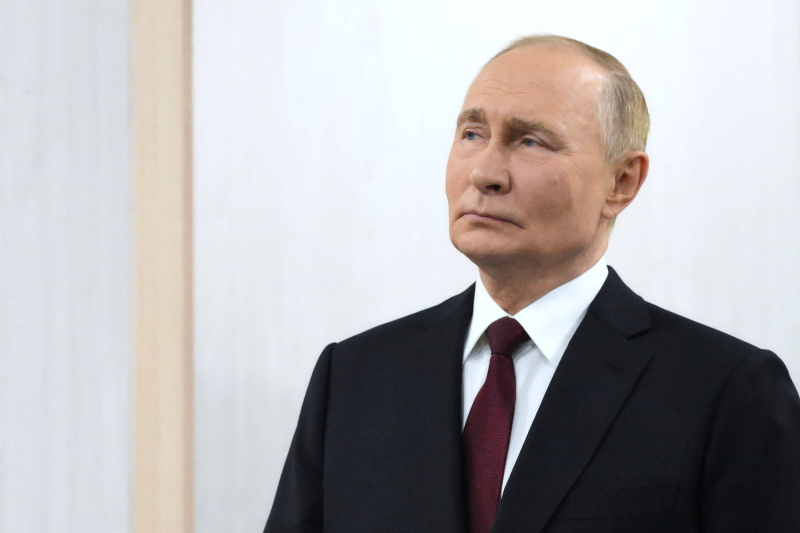Vladimir Putin has called for an expansion of the cases in which Russia could be authorized to use nuclear weapons. The return of the nuclear threat. As kyiv tries to convince the West to authorize the use of long-range missiles in its conflict with Moscow, Russian President Vladimir Putin has declared, once again, that the Kremlin would study the “possibility” of using nuclear weapons. An announcement cleverly orchestrated and broadcast on television to make an impression. Usually, this kind of meeting with the Security Council nuclear power is not intended to &be public. In these conditions, the Kremlin leader recalled that Russia has always had a “very responsible approach to these issues”. However, “we see that the current military and political situation is evolving very dynamically and we must take this into account”, he said. The head of state notably mentioned new threats hanging over the country and its allies. That is why changes concerning the Russian doctrine of using atomic weapons were proposed. And more specifically, an expansion of the cases in which Russia could be authorized to use nuclear weapons. Today, Russian doctrine authorizes their use in the event of a nuclear attack, an attack on its nuclear facilities or in the event of a conventional attack “putting the existence of the state at stake”. Vladimir Putin now wants to move to the higher speed by including other cases in which the country could use it. While Vladimir Putin is used to this type of announcement, these latest statements should be taken seriously, as they have a more threatening nature, and not only towards Ukraine, with which the country is still at war. “He added three new points that could be integrated into “doctrine,” explains Ulrich Kühn, director of the research program on arms control and emerging military technologies at the Institute for Peace and Security Policy at the University of Hamburg, in the columns of France 24. Although Russia has threatened to revise its nuclear doctrine several times, the country has now formulated specific demands. First, Moscow proposes to “consider aggression against Russia by a non-nuclear country but with the participation or support of a nuclear country as a joint attack on the Russian Federation,” Vladimir Putin said during the televised meeting. With this message, the Kremlin's leader is putting pressure on nuclear powers that support an attack on Russia. This includes, in particular, the potential sending of ballistic missiles to long-range British or American attacks through Ukraine, on Russian territory. By this postulate, Moscow would consider the United Kingdom or the United States as legitimate targets for a response, raising the threat of a global conflict. This is why, for several weeks, American President Joe Biden has been hesitant to give the green light for the sending of long-range missiles delivered by the West against Russian targets. “I think they are afraid of escalation,” Ukrainian President Volodymyr Zelensky said on this subject on Sunday, September 22. While Kiev considers this green light essential, Washington is trying to temporize, citing a number of missiles to provide too weak or that targeting, among other things, airport runways would have too little impact because they are repaired in just a few hours. This may be an opportunity for Joe Biden to gain time before the presidential election next November. While the American president announced the delivery of long-range weapons to Ukraine on Thursday, September 26, as well as military aid worth nearly 8 billion euros, the White House press release does not mention the green light hoped for by Ukraine to fire long-range missiles manufactured in the United States towards Russia. The missiles referred to in the press release have a range of 130 km, allowing the Ukrainian army to target Russia from more remote positions without endangering their aircraft. As for France, according to figures from the Ministry of the Armed Forces, the country delivered military equipment worth a total of 3.035 billion euros to Ukraine, to which is added 2.1 billion euros paid to the Facility European Peace Fund (EFF), representing military support of more than 5.135 billion euros since the start of the war. On May 28, Emmanuel Macron agreed for the first time to authorize Ukraine to strike military targets in Russia with French missiles, during a Franco-German council of ministers and in the presence of German Chancellor Olaf Scholz. He had completed his remarks by firmly excluding any impact on Russian “civilian capabilities”. France notably supplies Ukraine with artillery equipment such as Caesar cannons, AMX10-RC combat tanks, Bastion vehicles and Milan anti-tank missiles. On the anti-aircraft systems, unitary rocket launchers (LRU), Crotale anti-aircraft defense systems, a hundred Mistrals and a Mamba SAMP-T system jointly supplied by France and Italy, have been made available to the Ukrainian army. Vladimir Putin also plans to expand the use of nuclear weapons “if we receive reliable information about the mass launch of aerospace attack means and their crossing of our state border. I am referring to strategic and tactical aviation, cruise missiles, drones, hypersonic aircraft and other aviation devices,” he said on Wednesday. Finally, Moscow could reserve the right to use nuclear weapons in the event of an attack on an ally, such as Belarus. With such a statement, and the proposal of three new clear cases in which Russia could use nuclear weapons, Vladimir Putin is sending a very strong diplomatic message to the West, by giving credibility to the threat. This is “a way of saying that the ball is in the West's court and that Russia cannot be held responsible for what would happen if the warning were ignored,” says Ulrich Kümmel, still at France 24. Now it remains to know the position and reaction of the Western powers after the latest declarations of the master of the Kremlin, Paris included.
Nuclear weapon countries in the crosshairs
A considerable expansion of its nuclear doctrine

